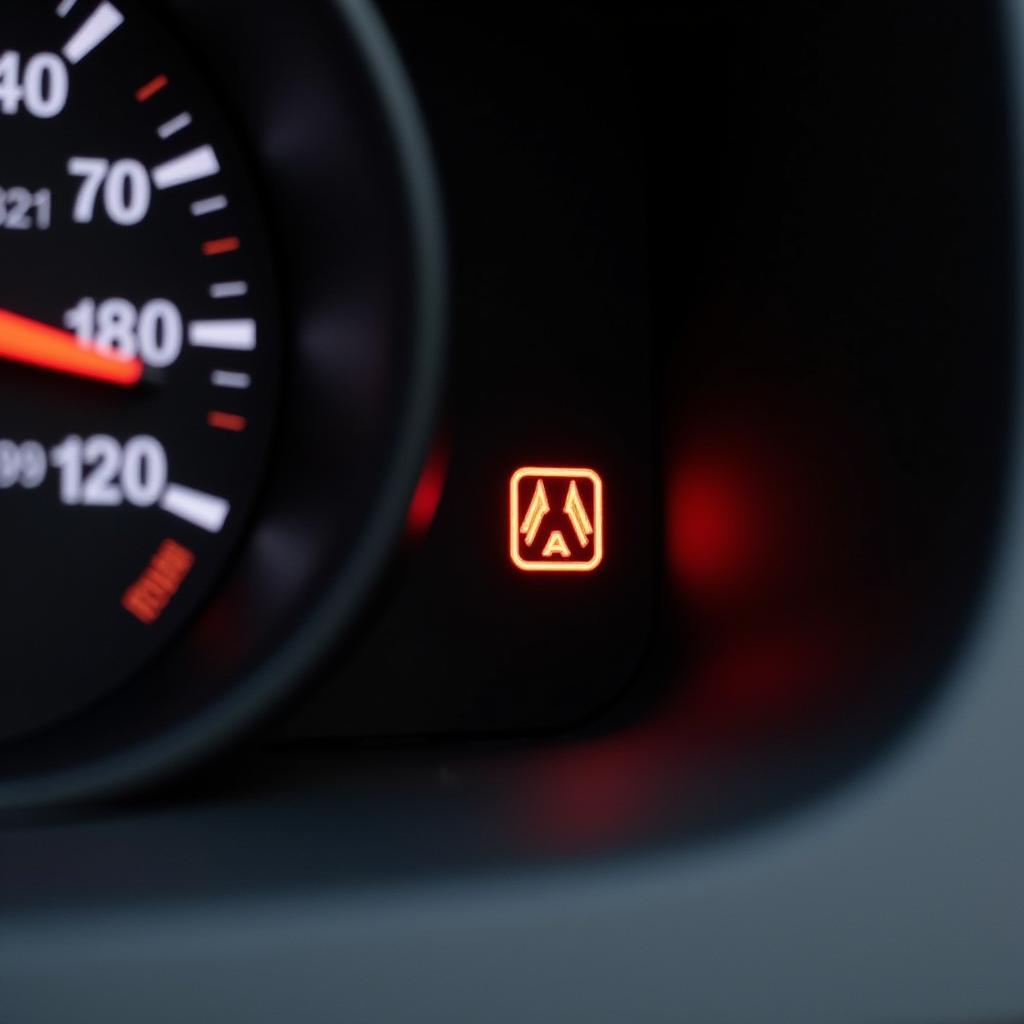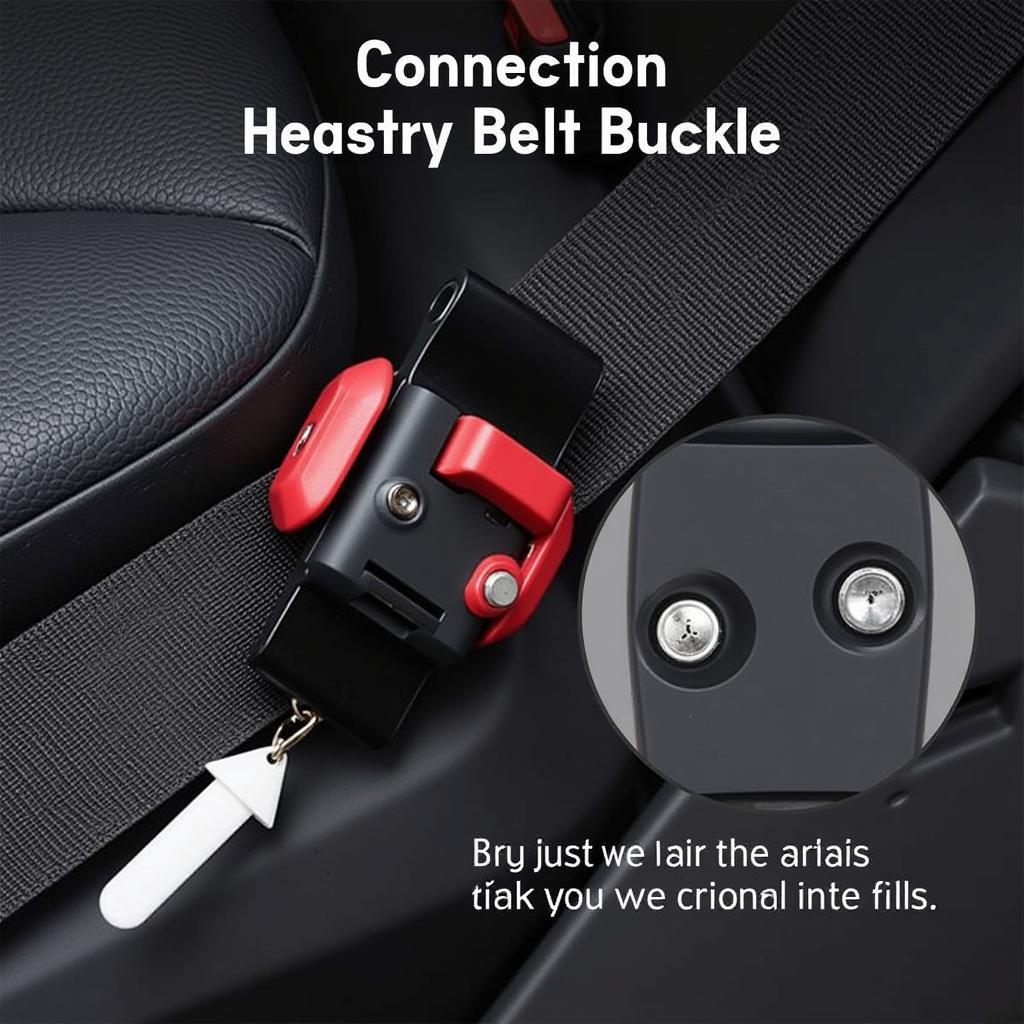Your Mazda 3’s brake system warning light illuminates on the dashboard, signaling a potential problem with your car’s braking system. This light can be a source of anxiety, as it signifies a crucial safety feature might be malfunctioning. Don’t panic; understanding the potential causes and solutions for this warning light is the first step to getting back on the road safely.
What Does the Brake System Warning Light Mean?
The brake system warning light indicates a problem with your car’s braking system. This could be anything from low brake fluid to a faulty sensor. It’s essential to investigate the warning light promptly and address the underlying issue to ensure safe braking performance.
Common Causes of a Mazda 3 Brake System Warning Light
Several common reasons can trigger the brake system warning light in your Mazda 3.
1. Low Brake Fluid
The most frequent cause of this warning light is low brake fluid. Brake fluid helps transmit pressure from the brake pedal to the calipers, which squeeze the brake pads against the rotors to slow down the vehicle. When the fluid level drops below the minimum line in the reservoir, the light activates. Low brake fluid can be caused by several reasons:
- Leakage: A leak in the brake lines, calipers, or master cylinder can lead to a loss of brake fluid.
- Brake pad wear: Worn brake pads can result in brake fluid usage and a lower fluid level.
- Old brake fluid: Over time, brake fluid can absorb moisture, which can compromise its effectiveness.
2. Faulty Brake Pad Wear Sensor
Brake pad wear sensors are small electrical components attached to the brake pads. They are designed to activate the warning light when the brake pads are worn down to a specific thickness. If these sensors malfunction, they might trigger the warning light even if the brake pads are still within acceptable wear limits.
3. Malfunctioning Brake System Components
Other potential causes for the warning light include:
- Faulty brake caliper: A damaged or seized caliper can prevent the brake pads from properly engaging, leading to a warning light.
- Issues with the brake master cylinder: The master cylinder is responsible for distributing brake fluid to the individual wheels. A damaged or faulty master cylinder can lead to a loss of braking pressure and trigger the warning light.
- Faulty ABS sensor: The Anti-lock Braking System (ABS) uses sensors to monitor wheel speed. If these sensors malfunction, they can trigger the warning light.
- Issues with the parking brake system: A malfunctioning parking brake can also cause the brake system warning light to illuminate.
What to Do When Your Mazda 3 Brake System Warning Light Turns On
It’s essential to take immediate action when the brake system warning light comes on. Here’s a breakdown of what to do:
- Pull over safely: Find a safe place to pull over immediately and turn off your engine.
- Check the brake fluid: Check the brake fluid level in the reservoir. If it’s low, it may be necessary to add brake fluid. However, be cautious as this could indicate a leak. Do not drive until you address the underlying issue.
- Have your car inspected: It’s best to take your Mazda 3 to a qualified mechanic for a thorough inspection. They can diagnose the problem and recommend the appropriate repairs.
Expert Insight:
“When the brake system warning light illuminates, it’s imperative to prioritize safety. The best course of action is to immediately pull over and contact a qualified mechanic. Attempting to diagnose and fix the issue yourself can be dangerous and may lead to further complications. A professional mechanic can provide a comprehensive assessment of your brake system and ensure your safety on the road,” says John Smith, a certified automotive technician with over 20 years of experience.
Frequently Asked Questions (FAQs)
Q: Is it safe to drive with the brake system warning light on?
A: It’s not safe to drive with the brake system warning light on. The light indicates a problem with your car’s braking system, which can significantly affect its performance and your safety on the road.
Q: Can I reset the brake system warning light myself?
A: It’s not advisable to attempt to reset the warning light yourself. The light is a warning that there’s a problem with your car’s braking system, and it shouldn’t be ignored. Have a professional mechanic diagnose and fix the underlying issue.
Q: How much does it cost to fix a brake system issue?
A: The cost of repairing a brake system issue can vary depending on the severity of the problem and the specific parts that need to be replaced. It’s best to contact your local mechanic to get an accurate quote.
Q: How often should I check my brake fluid?
A: It’s recommended to check your brake fluid level at least once a month or before long journeys. If you notice a significant drop in the fluid level, it could indicate a leak and should be addressed promptly.
Q: What’s the difference between the brake warning light and the ABS warning light?
A: The brake warning light indicates a general problem with the braking system, while the ABS warning light specifically points to an issue with the anti-lock braking system.
Conclusion
The brake system warning light on your Mazda 3 should be taken seriously. Ignoring it can put you and others at risk. The warning light is a vital signal that your car’s braking system needs attention. By addressing the issue promptly and having your car inspected by a qualified mechanic, you can restore safe and reliable braking performance.


